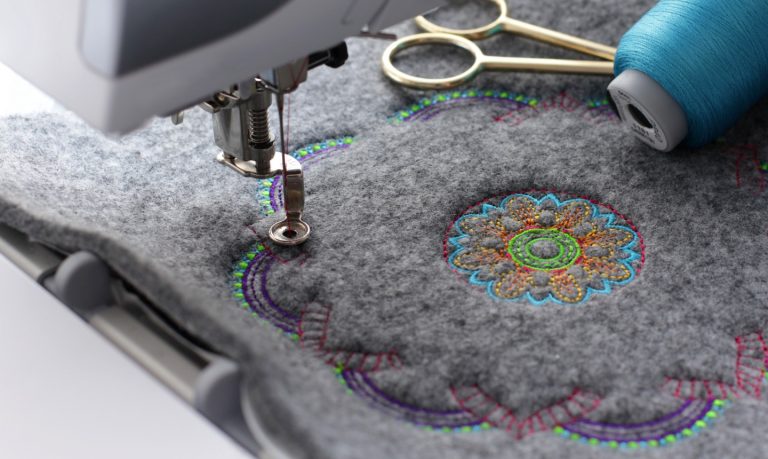Top-Rated Digitizing for Embroidery: Perfect Stitch Whenever
Top-Rated Digitizing for Embroidery: Perfect Stitch Whenever
Blog Article
Discover Different Sorts Of Embroidery Digitizing Strategies
Embroidery digitizing has actually developed dramatically throughout the years, offering a myriad of techniques to bring layouts to life in the digital realm. From the detailed artistry of standard hand embroidery digitizing to the accuracy of the boxing method, and the ease of auto-digitizing software application, the choices are substantial. The world extends to much more innovative strategies like photorealistic embroidery digitizing and the interesting world of 3D embroidery digitizing. Each strategy brings a distinct set of possibilities and challenges to the table, making the exploration of these approaches a compelling trip for those in the needlework globe.
Typical Hand Needlework Digitizing
Typical hand needlework digitizing entails the procedure of transforming complex hand-stitched styles into digital layouts for maker embroidery. This method requires skilled artisans to diligently assess the handmade style and after that use specialized software to recreate it in a digital layout. Each stitch, shade, and detail must be carefully translated to ensure that the significance of the initial hand embroidery is preserved in the electronic version.
One of the vital obstacles of conventional hand needlework digitizing is capturing the details and subtleties of the handmade style. Digitizing for Embroidery. Artisans have to possess a deep understanding of different needlework techniques, such as satin stitch, chain stitch, and French knots, to properly reproduce these methods in the digital world. In addition, they need to have a keen eye for detail to make certain that the digital layout maintains the exact same degree of creativity and workmanship as the original hand-stitched item
Punching Technique
To flawlessly transition from typical hand embroidery digitizing to the boxing method, craftsmens should currently focus on transforming the elaborate electronic designs right into instructions that embroidery machines can analyze. The punching method entails utilizing specialized software to produce electronic files that have commands for the embroidery maker to adhere to. This process calls for a deep understanding of not just the style itself yet also the abilities and constraints of the embroidery device.

Auto-Digitizing Software Application Programs
Needlework digitizing has been revolutionized by the introduction of auto-digitizing software application, supplying craftsmens with sophisticated devices to convert digital styles into embroidery maker directions effectively. Auto-digitizing software application programs utilize algorithms to evaluate digital images or vector files and create needlework styles immediately. These programs enable fast and precise conversion of elaborate designs into stitch patterns, conserving effort and time for embroiderers.
One of the essential advantages of auto-digitizing software is its straightforward user interface, making it obtainable to both newbies and knowledgeable digitizers. These programs commonly consist of features such as stitch editing and enhancing devices, string color matching, and the ability to sneak peek see it here the last stitched layout. Additionally, auto-digitizing software can manage complex layouts with numerous colors and elaborate information, creating top quality embroidery files suitable for numerous clothing and fabric jobs.
While auto-digitizing software supplies benefit and efficiency, it is necessary for individuals to recognize the restrictions of automated digitizing. Fine-tuning and manual modifications might still be needed to attain the preferred needlework high quality, specifically when handling intricate or special designs. By leveraging the abilities of auto-digitizing software together with hand-operated digitizing techniques, craftsmens can enhance their embroidery digitizing procedure and develop spectacular stitched pieces.
Photorealistic Embroidery Digitizing
Making use of advanced digital imaging strategies, achieving photorealistic cause embroidery digitizing has actually come to be a sought-after ability among modern artisans. This method entails converting high-resolution pictures right into elaborate stitch patterns that very closely mimic the original layout, leading to needlework pieces that display realistic information and deepness.
To achieve photorealistic embroidery digitizing, craftsmens have to have a keen eye for detail and a comprehensive understanding of just how different stitch types and densities can impact the final result. By very carefully drawing up each shade and color in the photo, embroiderers can develop a digital data that overviews the embroidery maker to duplicate the subtleties look these up of the initial photo precisely.
Photorealistic needlework digitizing is particularly prominent in developing custom designs for apparel, home decor, and art pieces where capturing the essence of a photograph or artwork is essential. This technique allows artisans to transform memories, landscapes, portraits, and detailed art work right into magnificent stitched masterpieces that showcase a blend of conventional craftsmanship and advanced technology.
3D Needlework Digitizing
With the development of electronic imaging strategies in attaining photorealistic outcomes in embroidery digitizing, the expedition of 'D Embroidery Digitizing' supplies a brand-new dimension to the complexities of design duplication. 'D Needlework Digitizing' refers to the three-dimensional digitizing technique that includes depth and texture to needlework styles, creating an extra practical and visually appealing end product. This strategy utilizes software that imitates the impact of light and shadow on the embroidery design, improving its overall aesthetic effect.
Among the crucial benefits of 'D Needlework Digitizing' is its ability to make designs look even more lifelike and dynamic. By including depth this page to the needlework style, the final product shows up a lot more sensible and exciting (Digitizing for Embroidery). Furthermore, this technique enables more innovative freedom in style implementation, allowing embroiderers to experiment with various textures and impacts that were formerly challenging to attain
Conclusion

Report this page